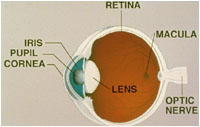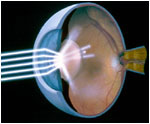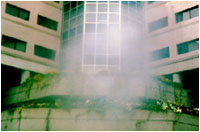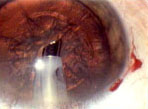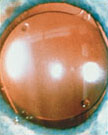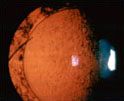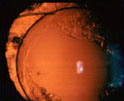Lens Implants
When the cataract, the cloudy lens, is removed, the haze is eliminated.
 Lens implant size.
However, the focus of the eye must be restored. Intraocular lens implants are made of a type of plastic or silicone.
Lens implant size.
However, the focus of the eye must be restored. Intraocular lens implants are made of a type of plastic or silicone.
The lens implants can be folded to permit placement inside the eye through the tiny incision already made for cataract removal. The power of the lens implant is calculated to give the best distance vision possible without glasses.
This approach is called the standard lens implant strategy. Bifocals may be necessary to sharpen vision for fine near tasks.
 Lens folded to be placed on eye.
Lens folded to be placed on eye.
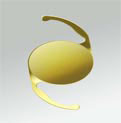 Unfolded lens implant.
Unfolded lens implant.
Specialty Lenses
A new approach for lens implants is called specialty lens implant technology. This new technology can give the patient distance, intermediate and near vision. There are two different approaches to specialty lens implants.
One, the Crystalens, looks like a standard lens implant but can focus near objects through the muscle effort that we all use to see near objects.
The other approach,ReStor , uses a multifocal technology, much like sophisticated progressive eyeglass correction. Both approaches can result in significant or total freedom from glasses.
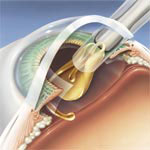 Insertion of lens implant into eye.
Insertion of lens implant into eye.
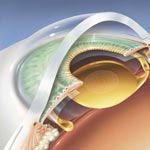 Postoperative appearance of eye
Postoperative appearance of eye
With lens implant in proper position
in lens capsular bag.
